What is Pelvic Inflammatory Disease?
Pelvic Inflammatory Disease (PID) is caused by a bacterial infection that begins in the cervix and spreads to one or more other organs of the female reproductive system. The infection can spread through the pelvic area, causing inflammation in the cervix, endometrium (lining of the uterus/womb), and one or both fallopian tubes and/or ovaries.
PID can affect sexually active women of any age but is most common in those aged 20 to 24. Men can also be silent carriers of bacteria that can cause PID.
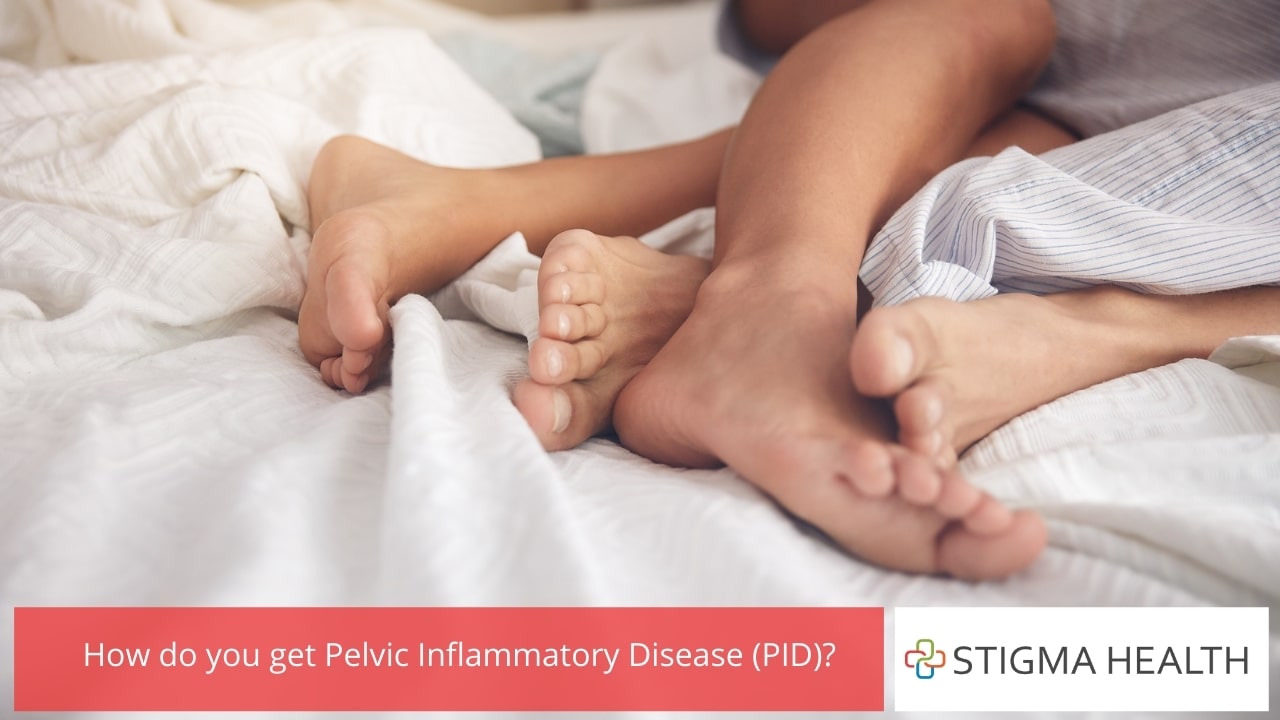
How do you get Pelvic Inflammatory Disease (PID)?
PID is most commonly caused by exposure to a sexually transmitted infection (STI) – usually chlamydia or gonorrhoea. These STIs are both spread through unprotected intimate skin-to-skin contact or unprotected sexual intercourse with a person who has the STI. An infected person may not show any signs or symptoms of the STI and may be completely unaware they have an STI.
You are more likely to get PID if you:
- have an untreated STI
- have more than one sexual partner (even if you use protection)
- have a sexual partner who also has sex with people other than you
- douche
- have had PID before
More rarely, PID may be caused by infections that aren’t spread by sexual contact. Bacteria from the vagina and cervix may enter the uterus during a gynaecological procedure, such as insertion of an intrauterine contraceptive device (IUD), an abortion, D&C (dilatation and curettage – i.e., removal of tissue from inside your uterus), or even childbirth.
Can you give Pelvic Inflammatory Disease (PID) to someone else?
Yes and no. You cannot give someone PID directly. However, if you have an STI and you have unprotected intimate skin-to-skin contact or unprotected sexual intercourse with someone, you risk passing on the STI to your sexual partner. Because PID is most often caused by exposure to an STI –usually chlamydia or gonorrhoea – it is possible for you to give your partner an infection that can lead to PID.
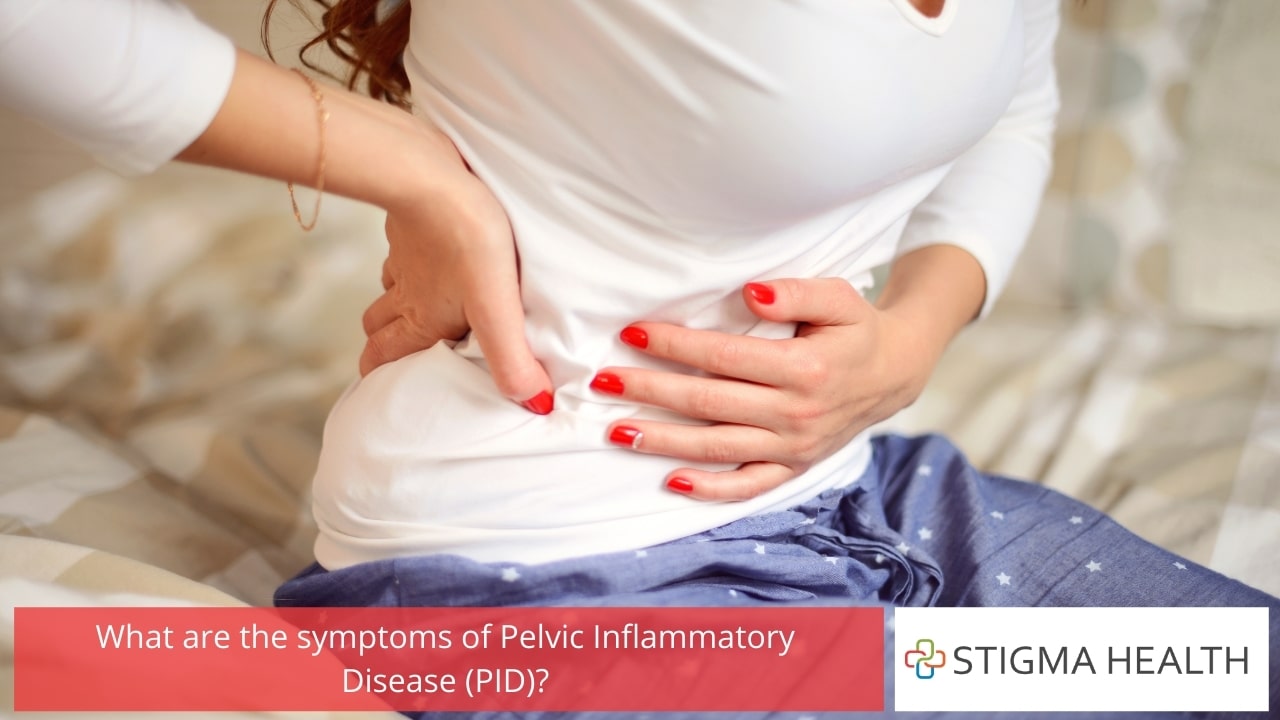
What are the symptoms of Pelvic Inflammatory Disease (PID)?
The signs and symptoms of PID may not always be easy to spot. If PID is caused by exposure to chlamydia, a woman may have no signs or symptoms at all. Sometimes symptoms can develop slowly over time and, if and when they do present, they may be quite mild. At other times, symptoms can develop very quickly and be quite severe.
Symptoms of PID can include:
- pain in the back or lower abdomen (most common) or upper abdomen
- abnormal vaginal bleeding, e.g., disrupted periods, unusually heavy periods, bleeding between periods or after sex
- abnormal and/or smelly vaginal discharge
- pain during sex or urination
- more painful periods
- flu-like symptoms, e.g., tiredness, nausea, vomiting, fever, or chills
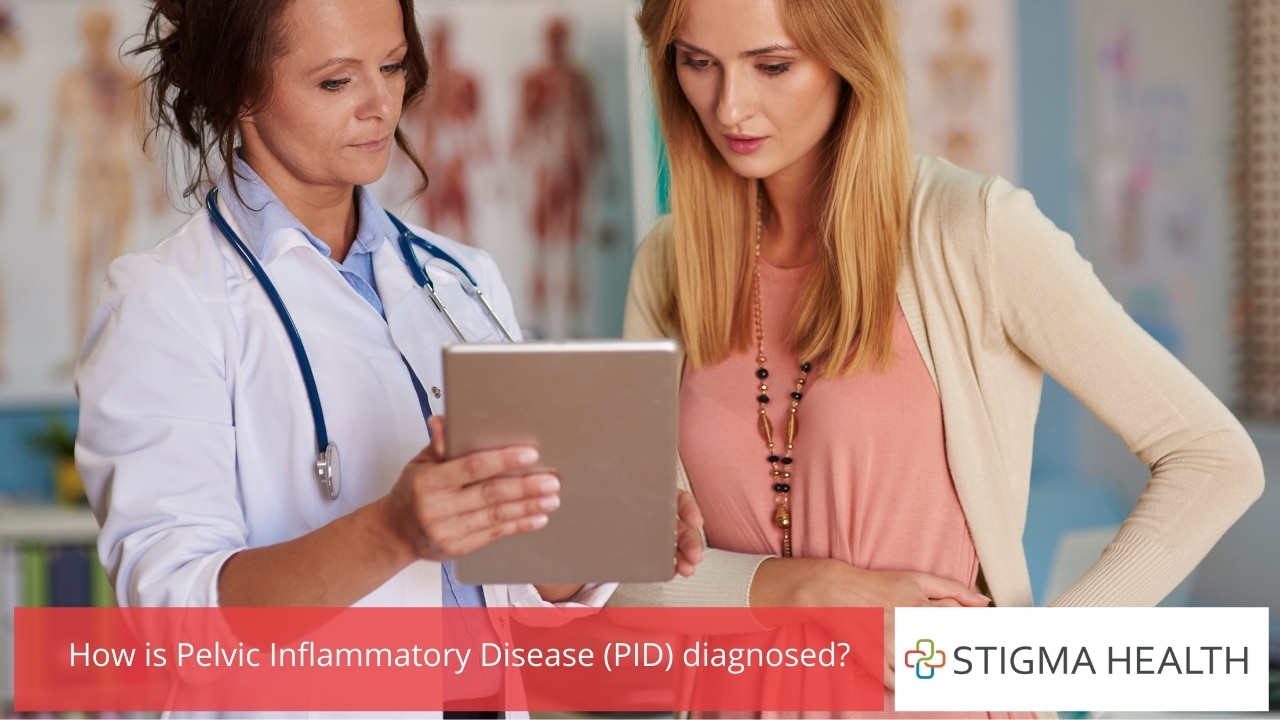
How is Pelvic Inflammatory Disease (PID) diagnosed?
For proper diagnosis of PID you need to see a healthcare professional (doctor or nurse). They will take your medical/sexual history, discuss any symptoms, and may perform a pelvic and/or vaginal examination. Vaginal and cervical swabs will generally be taken at this time and sent for pathological testing, to identify the source of infection.
Other diagnostic tests may also be ordered, including a urine test, blood test, pelvic ultrasound and/or endometrial biopsy (a procedure to take a small sample of tissue from the lining of your uterus).
Depending on your symptoms, you may be sent for a laparoscopy (a procedure where a special flexible camera is inserted into your abdomen via a small incision, to examine your pelvic cavity and reproductive organs) – though the need for this test is rare.
Can Pelvic Inflammatory Disease (PID) cause other problems?
If not treated early, or left untreated, PID can cause serious health complications. Delaying treatment can result in scarring of your fallopian tubes and other pelvic organs, particularly if you get it more than once. This scarring has the potential to cause tubal blockages, infertility, or complications in pregnancy.
Untreated PID can also cause ongoing pelvic pain. If the infection spreads to your blood it can cause septicaemia (blood poisoning) – this is an exceedingly dangerous infection that can become life-threatening if left untreated.
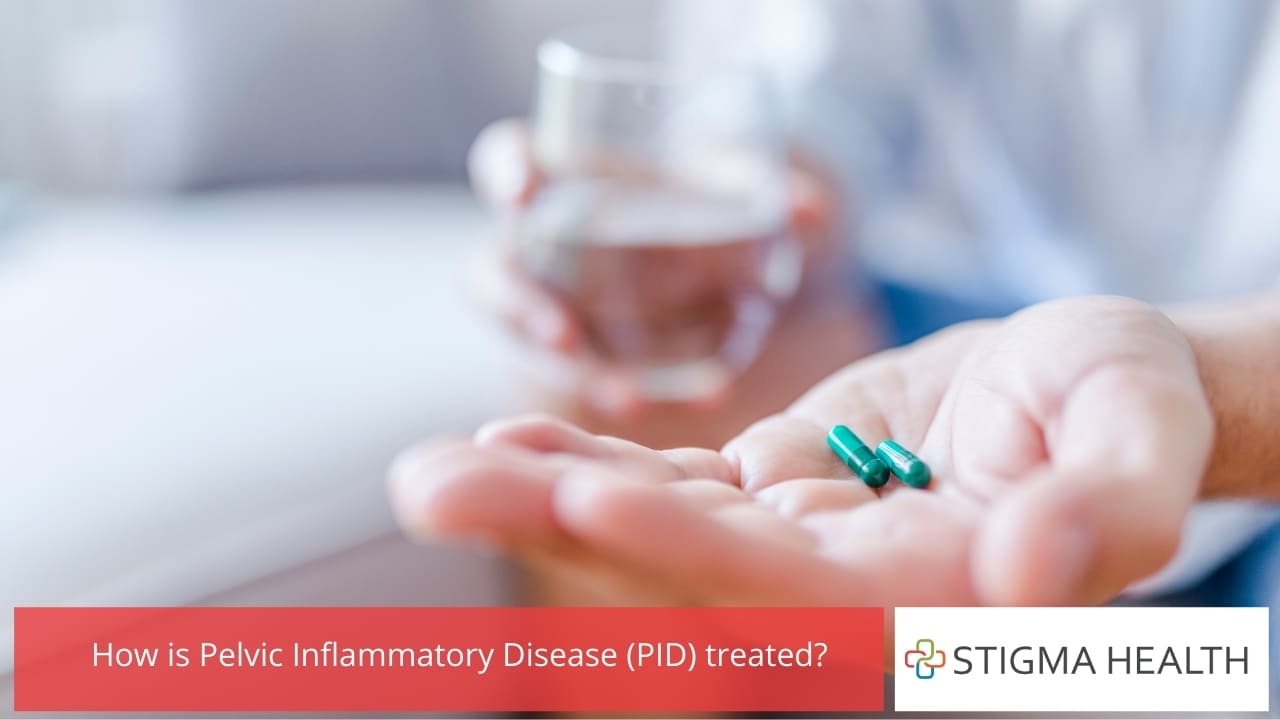
How is Pelvic Inflammatory Disease (PID) treated?
PID is treated with a variety of antibiotics used in combination, for greater effectiveness, for at least 14 days. Your healthcare professional will usually begin treatment for PID immediately, without waiting for your test results, to avoid any potential complications (see above).
It’s important to complete the full course of medication, as the infection may not fully clear if you don’t – and you risk the bacteria becoming resistant to antibiotic treatment in future. You must not have sex until the course of antibiotics has been completed, even if your symptoms disappear, to avoid reinfection or passing the STI on to someone new.
It’s also important to arrange a follow-up appointment with a healthcare professional, to ensure treatment was effective and the infection and STI have resolved.
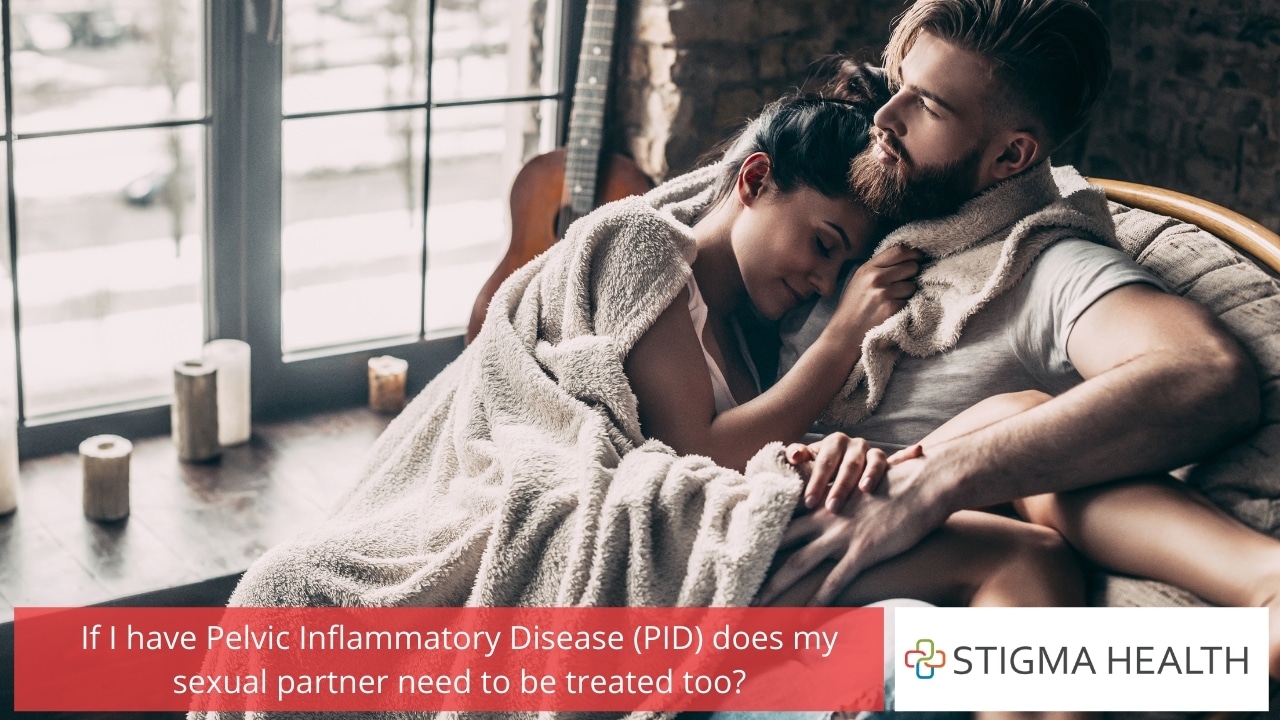
If I have Pelvic Inflammatory Disease (PID) does my sexual partner need to be treated too?
If your healthcare professional confirms a diagnosis of PID, your current sexual partner/s should be screened and treated for STIs. If you or your partner are diagnosed with an STI you will both require additional treatment.
Even if your STI test results are negative, you and your current sexual partner/s should be treated for chlamydia. If your and your partners’ STI test results are positive for gonorrhoea, both you and your partner will need to be treated for it with a course of antibiotics specifically targeted to gonorrhoea.
You must not have sex with anyone until you have completed your treatment and received a negative STI test result. Your partner(s) must not have sex with you or anyone else until they have completed treatment, as they may reinfect you or infect their other sexual partner/s.
Your healthcare professional can provide you with information on contacting your sexual partner/s, or you can check out the Stigma Health Resources page for helpful resources and services.
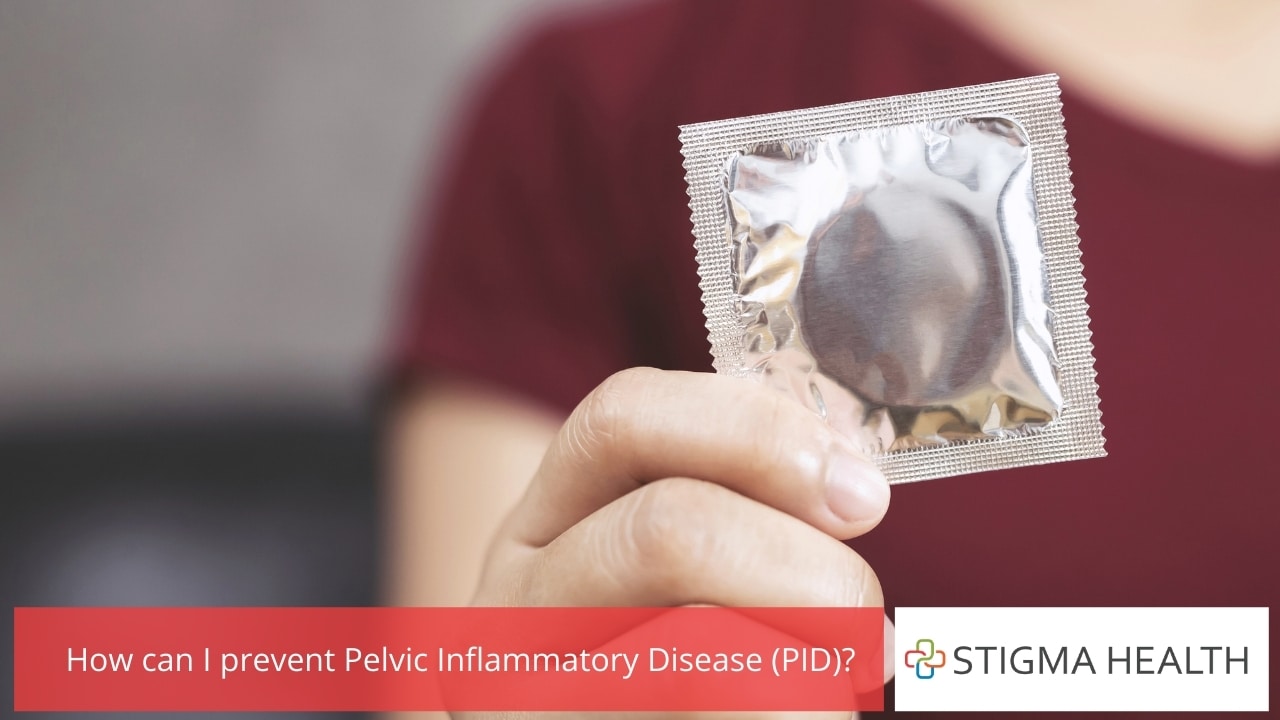
How can I prevent Pelvic Inflammatory Disease (PID)?
The only way to completely prevent yourself from getting PID is to abstain from sexual activity, however for many people that’s neither practical nor enjoyable. So, for the best chance at avoiding PID:
- always use barrier protection (male or female condoms and dental dams) when you have intimate or sexual contact – especially with a new or non-exclusive sexual partner
- consider limiting your number of sexual partners
- avoid douching
- ensure good genital hygiene – women should always wipe front to back after urinating (peeing) and when washing, to avoid bacteria entering the vagina
- have regular STI checks if you are sexually active, under the age of 25, and/or have had unprotected intimate or sexual contact with a new or non-exclusive sexual partner. Stigma Health can help with getting tested.
When should I see a doctor?
If you think you may have PID, or you have any of the symptoms listed above, it is important to visit your doctor as soon as possible for diagnosis and treatment. When diagnosed early, PID can be easily treated.
- see a healthcare professional as soon as possible if you have any genital symptoms, e.g., visible sores, abnormal bleeding or discharge from the vagina or penis, or burning or stinging when you urinate (pee)
- see a healthcare professional as soon as possible if you think you or your sexual partner/s may have been exposed to an STI, or contact Stigma Health to get tested
References:
https://www.betterhealth.vic.gov.au/health/healthyliving/pelvic-inflammatory-disease-pid
https://www.cdc.gov/std/pid/stdfact-pid.htm
https://www.healthdirect.gov.au/pelvic-inflammatory-disease
https://www.fpnsw.org.au/factsheets/individuals/stis/pelvic-inflammatory-disease
https://www.betterhealth.vic.gov.au/health/conditionsandtreatments/dilatation-and-curettage-dc
https://www.healthline.com/health/pelvic-inflammatory-disease-pid
